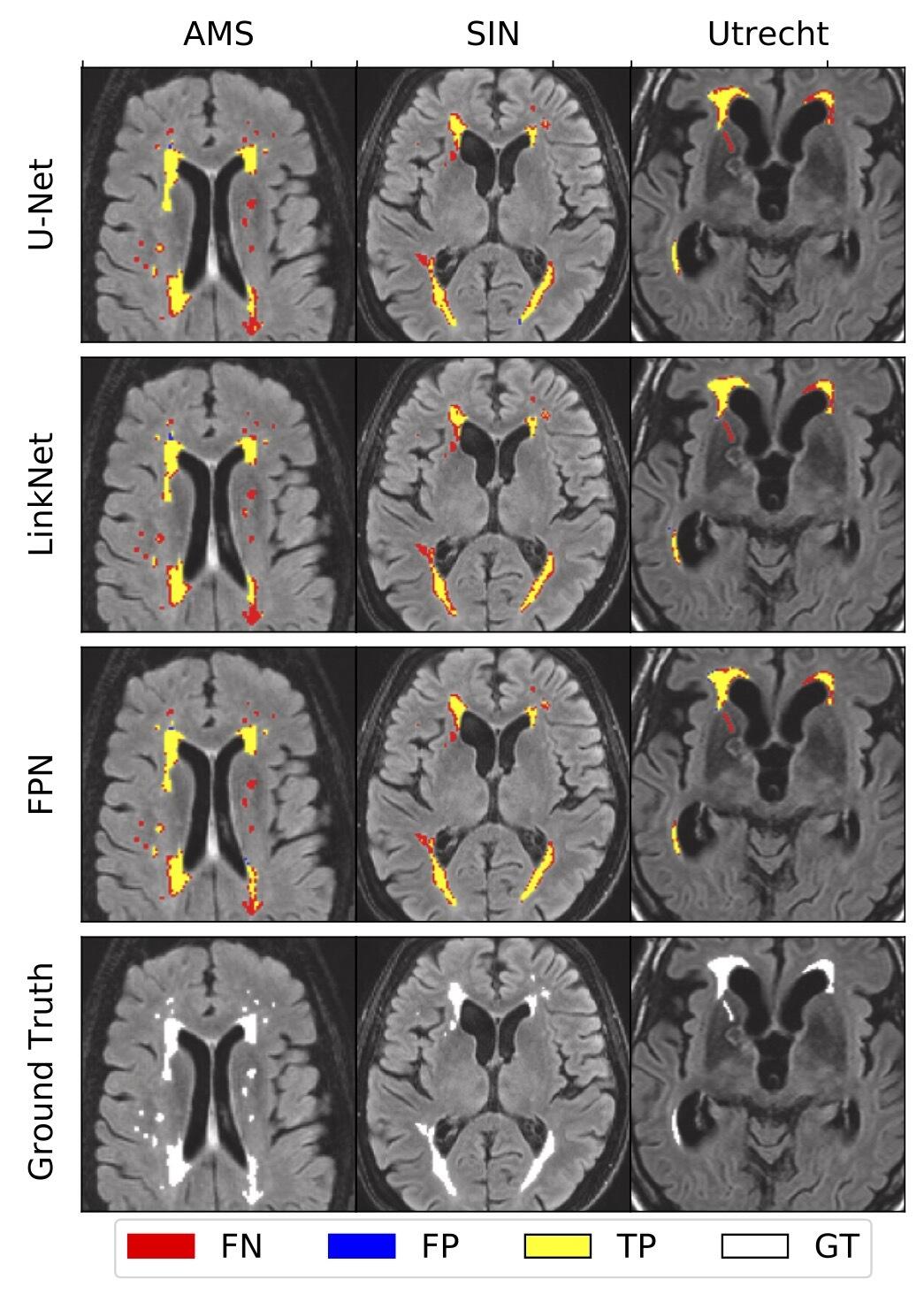Image Analysis Tools and Pipelines
Development and evaluation of new image analysis tools and processing pipelines.
This project focuses on solving the computational challenges surrounding processing of quantitative imaging data, especially in the context of large imaging clinical studies and trials (i.e., >>1,000 examinations). A major focus is on the application of novel machine learning approaches to facilitate automated and semi-automated processing. A number of traditional as well as deep learning methods are currently under investigation. Interpretable deep-learning techniques are of particular interest.
Several of these developments is conducted in conjunction with expertise at the Calgary Image Processing and Analysis Centre (CIPAC), as well as with collaborators at the Medical Imaging Processing Laboratory (MICLab) at the University of Campinas.
Representative Publications
- Bento M, Souza R, Salluzzi M, Frayne R. Normal Brain Aging: Prediction of Age, Sex and White Matter Hyperintensities Using a MR Image-Based Machine Learning Technique. International Conference Image Analysis and Recognition 2018; 538-545.
- Souza R, Lucena O, Garrafa J, Gobbi D, Saluzzi M, Appenzeller S, Rittner L, Frayne R, Lotufo R. An open, multi-vendor, multi-field-strength brain MR dataset and analysis of publicly available skull stripping methods agreement. Neuroimage 2018; 170: 482-494. doi: 10.1016/j.neuroimage.2017.08.021.
- Lucena O, Souza R, Rittner L, Frayne R, Lotufo R. Convolutional neural networks for skull-stripping in brain MR imaging using silver standard masks. Artif Intell Med 2019; 98: 48-58. doi: 10.1016/j.artmed.2019.06.008.
- Bento M, Souza R, Salluzzi M, Rittner L, Zhang Y, Frayne R. Automatic identification of atherosclerosis subjects in a heterogeneous MR brain imaging data set. Magn Reson Imaging 2019; 62: 18-27. doi: 10.1016/j.mri.2019.06.007.
- Duarte KTN, Gobbi DG, Sidhu AS, McCreary CR, Saad F, Camicioli R, Smith EE, Frayne R. Segmenting white matter hyperintensities in brain magnetic resonance images using convolution neural networks. Pattern Recognition Letters. 2023 (in-press) doi: 10.1016/j.patrec.2023.07.014
Prospective Trainee Requirements
MSc or PhD in Mathematics, Computer Science, Electrical or Computer Engineering, Physics or a closely aligned field. Good skills and experience in statistics, and image processing and analysis techniques. Understanding of modern software engineering principles. Experience in C++ or Python or similar language and pattern recognition techniques is desired. Good written and oral English language skills.

Segmentation results for the three patients comparing 2.5D U-Net variants (regular U-Net, LinkNET, FPN).
